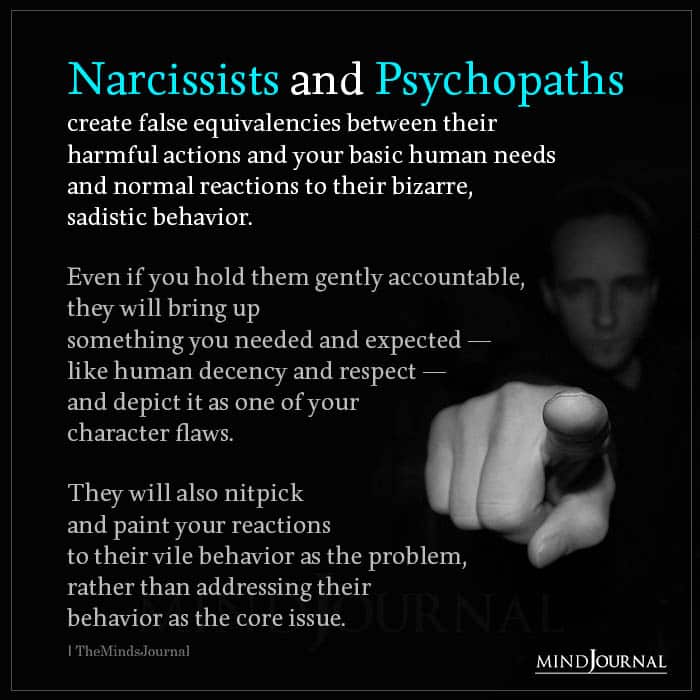Most of us show up at work with a benevolent worldview, believing that accomplishments are an outgrowth of hard work and expecting our colleagues to comply with the universal moral codes of kindness, cooperation, integrity, and truth-telling. To place a label on someone’s back, may feel like an act of degradation.
Though at times, labeling offers us a helpful roadmap for interacting with individuals who consistently exhibit characteristics that call for a new toolbox. The bully narcissists in the office, or at your family gatherings, are one such group.
Though bullies come in a variety of forms, the narcissist offers unique challenges. Workplace bullying is defined as the persistent and deliberate attempt to degrade an employee through manipulation, gossip, sabotage, exclusion, and ostracisation with the ultimate goal to push the target out. Narcissism falls within the DSM-5’s Cluster B disorders, alongside borderline, antisocial, and histrionic personality disorders, all marked by unpredictable and volatile emotionality.
Related: Workplace Bullying: 8 Signs of A Toxic Person At Work
The NPI, or Narcissistic Personality Inventory, is the most prevalent tool for assessing subclinical narcissism, consisting of a series of 40 questions originally designed by Raskin and Hall in 1979. Though the bully narcissist you encounter in the office is unlikely to have a clinical diagnosis, it is wise to be wary.
Narcissists, according to Kacel, Ennis, and Pereira’s, rarely seek counseling, and when they do are difficult to treat. Therefore, recognizing the warning signs is essential if potential victims are to avoid stepping into thought holes, a concept described in Dana Morningstar’s book Out of the Fog.
Thought holes are cognitive distortions that may lead targets to act against their best self-interest and safety. Bully narcissists are experts at twisting people’s reality, circumventing blame, and engaging in manipulative discourse. These behaviors require co-workers to use a new bag of tricks to survive.
According to Craig Malkin, a clinical psychologist and instructor at Harvard Medical School, narcissists tend to possess a grandiose sense of self, feel entitled to special treatment, and are prone to emotional outbursts. To feed their intense insecurities, narcissists require constant outside validation of their self-worth, while at the same time failing to empathize with the perspective and pain of others.
For this reason, narcissists often struggle to maintain long-term relationships; though their grandstanding may afford them early popularity, over time, their entitlement, demands, and propensity to rage wear others out. Narcissists struggle to see their own faults and often engage in child-like temper tantrums when disappointed or called out for poor behavior.
Alarmingly, Twenge, Konrath, Foster, Campbell, and Bushman’s cross-temporal meta-analysis show evidence that narcissism is on the rise, making it all the more vital to recognize the bully narcissist’s tactics of projecting, gaslighting, raging, and launching smear campaigns. Such maneuvers make it almost impossible for colleagues to rely on typical prosocial interaction strategies such as reciprocal listening, cooperation, and trust.
Below is a cheat sheet for what to look out for followed by suggestions for countering potentially harmful advice given by well-meaning family, friends, and colleagues.
The Bully Narcissist’s Top Tools For Engagement
1. Projecting.
Projecting is the act of placing one’s struggles and characteristics onto another in an effort to overt ownership and analysis. For example, an aggressive bully narcissist may accuse his target of being combative when the target politely requests the bully to speak respectfully and refrain from insults.

2. Gaslighting.
Gaslighting is an attempt to make a target question his view of reality and dismiss his gut feelings. For example, a bully narcissist may deny yesterday’s tirade laced with profanity and concluding with her ripping up the final proposal before stomping out of the room. When later questioned about her behavior, she will insist it was simple civil discourse, leaving the target to question his sense of reality.
When targets begin to feel the need to record conversations with a particular colleague, there is a good chance their subconscious is detecting gaslighting.
Related: Toxic Coworkers: How To Deal With The 7 Most Dangerous Work Personalities
3. Raging.
Bully narcissists have a propensity for childlike temper-tantrums, spewing obscenities, and tossing out accusations when they are disappointed, irritated, or called out for bad behavior. All individuals have moments of intense frustrations, but when raging becomes a common occurrence, it is wise to step away.
4. Smear Campaigns and Flying Monkeys.
Bully narcissists may become enraged when challenged or contradicted. In an attempt to patch their self-doubt, they often spread gossip about the target in an effort to damage her reputation. Bully narcissists frequently deploy flying monkeys, or co-conspirators, to intensify the spread of the slander.
Bully narcissists sometimes feed their insecurities by terrorizing colleagues they are jealous of or aspire to become.
Replacing Well-Meaning Advice With Research Driven Solutions
Grijalva and Newman found narcissists to be a lead cause of CWB or counterproductive work behavior, charging colleagues to search out new techniques for reestablishing the office’s equilibrium. Dr. Ramani Durvasula, a clinical psychologist and expert in narcissist personality disorder, advises victims to relinquish their quest for justice, abandon the belief that narcissists will respond rationally, and stop counting on the narcissist to change. Instead, she urges targets to adopt new approaches shown to mitigate damages and minimize targets’ exposure.
Below are three pieces of advice commonly given by well-meaning family, friends, and colleagues. Such advice is helpful when dealing with thoughtful colleagues but may prove disastrous when applied to the bully narcissist who requires a different toolbox.
1. It’s just a personality conflict, you should talk it out.
Bully narcissists struggle to engage in open and honest conversations, especially when their actions are challenged. Attempts to use civil discourse to work through problems are often met with escalations and rages. When possible, it is best to disengage, walk away, and minimize contact.

2. It wasn’t all that bad, you just need to stop being so sensitive and get over it.
Being on the receiving end of a bully narcissist’s rage can be traumatizing. Often, others urge targets to minimize their feelings in an effort to keep the peace. To remain in reality and validate their experience, it is helpful for targets to write down the details of each questionable encounter immediately after it transpires, providing an accurate account to refer back to when others insist, “It wasn’t all that bad.”
Targets also benefit from writing themselves permission slips, in which they describe the dynamics of the relationship, remind themselves of their innate value, and grant themselves permission to step away from the abuse. This letter serves as a lifeline for targets to refer back to when they feel tempted to re-enter the bully narcissist’s realms out of fear, obligation, or guilt.
Related: How To Outplay A Narcissist And Beat Them At Their Own Game
3. You need to hit back harder so he knows not to mess with you.
Bully narcissists do not tend to back down. When called out or challenged, they often ratchet up the threats, intensify the rumors, and spiral into a rage.
To maintain targets’ safety and dignity, Dr. Ramani suggests no contact when possible, and if interactions are unavoidable, becoming a gray rock, meaning the target hides her hurt and refuses to engage in combat. Over time, this response makes her as boring to the bully narcissist as a nondescript pebble, leading him to move onto a new victim.
Office bullies come in a variety of forms. The bully narcissist is often celebrated in corporate cultures for his confidence and grandiosity but feared by those he demeans, rages against, and attempts to dismantle their stellar reputation all in an effort to feed his intense insecurities.
Knowing how to spot the bully narcissist and arm oneself with engagement strategies, help to mitigate the pain, and maintain the target’s mental well-being.
Copyright (2020). Dorothy Courtney Suskind, Ph.D.
If you want to get in touch with Dorothy Suskind, you can drop her a mail at dorothysuskind@gmail.com.
Written By Dorothy Suskind Originally Appeared In Psychology Today
References:
American Psychiatric Association,. (2013). Diagnostic and statistical manual of mental disorders: DSM-5. Arlington: American Psychiatric Association. Forward, S., & Frazier, D. (1997). Emotional blackmail. London: Bantam. Durvasula, R. (2019). Don't you know who I am?: How to stay sane in an era of narcissism, entitlement, and incivility. New York: Post Hill Press. Grijalva, E., & Newman, D. A. (2015). Narcissism and counterproductive work behavior (cwb): Meta-analysis and consideration of collectivist culture, big five personalities, and narcissism's facet structure. Applied Psychology: An International Review, 64(1). Kacel, E. L., Ennis, N., & Pereira, D. B. (2017). Narcissistic personality disorder in clinical health psychology practice: Case studies of comorbid psychological distress and life-limiting illness. Behavioral Medicine, 43(3), 156-164 Malkin, C. (2015). Rethinking Narcissism: The bad-and surprising good-about feeling special. New York: HarperWave. Michalak, R. T., & Ashkanasy, N. M. (2020). Working with monsters: Counting the costs of workplace psychopaths and other toxic employees. Accounting & Finance, 60, 729–770. Morningstar, D. (2018). Out of the fog: Moving from confusion to clarity after narcissistic abuse. MorningstarMedia. Raskin, R. N., & Hall, C. S. (1979). A narcissistic personality inventory. Psychological Reports, 45(2), 590. Raskin, R., & Terry, H. (1988). A principal-components analysis of the Narcissistic Personality Inventory and further evidence of its construct validity. Journal of Personality and Social Psychology, 54(5), 890–902. Thomas, S., & In Choi, C. (2017). Healing from hidden abuse: A journey through the stages of recovery from psychological abuse. MAST Publishing House. Twenge, J. M., Konrath, S., Foster, J. D., Campbell, W. K., & Bushman, B. J. (2008). Egos inflating over time: A cross-temporal meta-analysis of the narcissistic personality inventory. Journal of Personality, 76(4), 875–902.











Leave a Reply